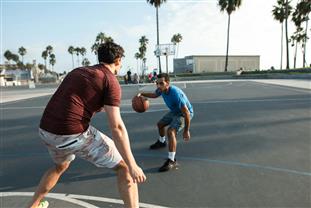
There was a time when training had a clear beginning and end. Athletes had “on” seasons and “off” seasons—periods of peak performance followed by well-earned breaks. Even weekend warriors, gym-goers, and runners once viewed their routines with a similar rhythm: summer was for pushing limits, winter for rest. But somewhere along the way, the lines blurred. What was once seasonal became year-round. Training stopped being a phase and started to feel like a lifestyle.
Call it dedication, call it discipline, but there’s no denying the shift. More people than ever are living as if they’re always in-season. Rest days still exist, but they’re scheduled with the same precision as workouts. Cross-training is no longer just for pros. And the old “start fresh in January” mentality has been replaced by a constant, rolling pursuit of better.
Fitness Without Finish Lines
One of the most telling signs of the shift is how many now approach fitness without a fixed goal or endpoint. It’s not just about preparing for a race, a vacation, or a wedding anymore. It’s about consistency for its own sake. Training is no longer what you do to get somewhere—it’s just what you do.
Apps, wearables, and online programs have reinforced this mindset. There’s always a new challenge, a leaderboard to climb, a streak to maintain. Progress becomes addictive, and the idea of stopping—even briefly—feels counterproductive.
For many, that’s part of the appeal. The steady rhythm of movement gives structure to otherwise chaotic lives. It offers control in a world that rarely slows down. And it blurs the line between athlete and everyday person: if you train year-round, aren’t you always in shape?

From Sport to Identity
What began as an activity has, for many, become identity. You’re not just someone who does CrossFit—you are CrossFit. You’re not a person who runs—you’re a runner. The shift is subtle, but powerful. When training becomes part of how you see yourself, it becomes harder to stop.
This blending of movement and identity isn’t necessarily harmful. For some, it fosters community and motivation. But it can also raise the stakes. A skipped workout doesn’t just feel like a missed opportunity—it feels like a deviation from who you are. The off-season, once a time to regroup, can now feel like a loss of momentum or self.
Social media amplifies this, of course. The rise of fitness influencers, training reels, and meticulously curated routines makes it seem like everyone else is always grinding. Rest, in contrast, rarely goes viral.
New Definitions of Rest and Recovery
Still, as the intensity of year-round training rises, so does the conversation around recovery. Many now realize that relentless effort without pause leads to burnout or injury. But instead of stepping back entirely, recovery is often reframed as “active rest”—gentler movement, mobility work, or low-impact sessions.
In this version of the off-season, you’re still doing something. A walk replaces a long run. A yoga class stands in for heavy lifting. The mindset shifts from “stop” to “slow down.”
This isn’t necessarily a bad evolution. It means people are paying attention to their bodies in a more nuanced way. But it also suggests how deeply ingrained the need to be “doing something” has become.
The Role of Gear and Environment
Technology and access play a role here, too. With home gyms, online programs, and remote coaching more accessible than ever, training has fewer barriers. Weather, travel, and scheduling conflicts are no longer valid excuses when you can work out in your living room or follow a routine from your phone.
Sportswear brands now market their products not just as gear, but as daily essentials. Leggings, moisture-wicking shirts, and high-tech sneakers aren’t just for the gym—they’re everyday wear. When your wardrobe always looks workout-ready, it’s easier to adopt a mindset that says your body should be, too.

The Disappearing “Off-Season” for Youth
This shift isn’t limited to adults. Youth sports have also seen the year-round mentality take hold. Club teams, private coaching, and specialization are becoming the norm, even for kids. The idea of playing one sport in the fall, another in spring, and taking summers off has been largely replaced by a single-sport, all-year grind.
Proponents argue this builds skills and dedication. Critics warn it leads to overuse injuries and early burnout. Either way, the off-season, once a built-in buffer for recovery and exploration, is increasingly viewed as a missed opportunity rather than a necessary pause.
What We Lose in Constant Readiness
There’s something undeniably admirable about consistency. But always being “on” comes with its costs. It can make rest feel like weakness, create guilt around downtime, and turn movement into obligation rather than joy.
It also flattens the emotional landscape of training. When everything is always happening, nothing feels particularly special. The thrill of a new program, the satisfaction of finishing a cycle, or the buildup to an event loses its intensity when there’s no true break in between.
Some are starting to question this. Not everyone wants to live in a permanent preseason. A growing number of coaches, physical therapists, and athletes are talking about bringing back the true off-season—not just as a luxury, but as a necessity. A time to reset, shift focus, and even miss training a little before returning with renewed energy.
Finding Balance in an Always-On World
Year-round training isn’t going away. For many, it provides mental clarity, physical stability, and emotional strength. But maybe it’s worth revisiting the idea of rhythm. The body, after all, thrives on cycles: effort and recovery, stress and rest.
Choosing to slow down doesn’t mean you’re losing progress. It might actually mean you’re respecting the bigger picture. The goal isn’t just to perform—it’s to keep performing, long-term.
In the end, the real sign of progress might not be a heavier lift or a faster pace. It might be knowing when to pause, when to breathe, and when to let the season change—inside and out.






